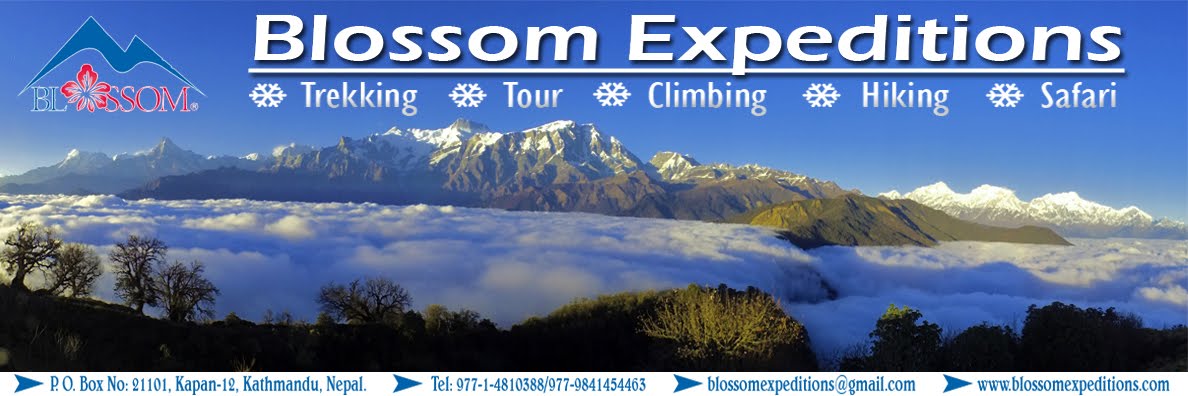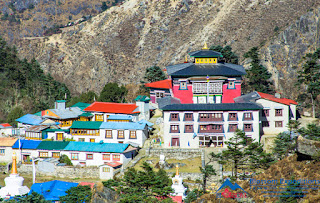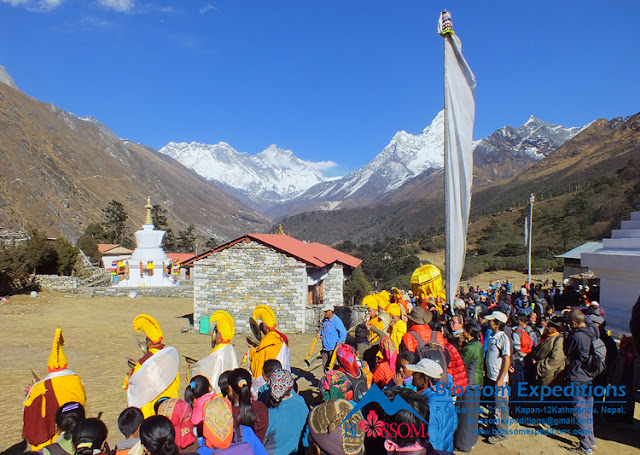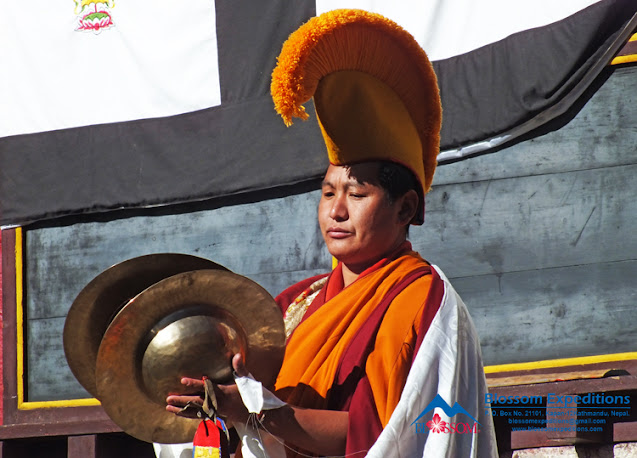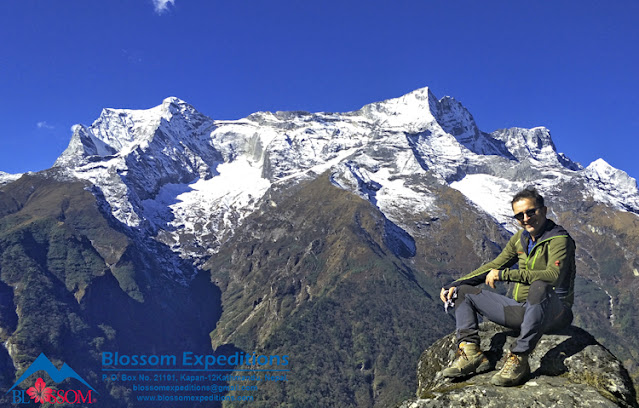Sherpa’s from the Khumbu Valley and Lamas gather at the monastery for preparation and to facilitate the guest, visitors, and performers. People believe the Demons are quelled; the virtuous are rewarded from the celebrations. Last three days of the public ceremony, lamas wear colorful and elaborate costumes and masks. And through the series of ritualistic Mask dances, dramatize the victory of Buddhism over Demon and seen-unseen negative powers. Hundreds of Sherpa People and foreigners gather to see the last three days of public ritual.
The public celebration is for three days. People travel from a distance to participate in this important social occasion and many foreigners come to absorb this fascinating ceremony. The sequences of dances emanate from Rongbuk Monastery in Tibet, on the northern side of Mt. Everest, and depict the victory of Buddhism over the Bon religion and demon. Preparation of the ceremony requires building Sand Mandala, the empowerment/Blessing, Mask Dance, and Fire Puja.
Sand Mandala is drowned step by step beginning of the festival. Symbolic design Mandala is made by colorful sand and a defensive blade symbolizes Buddhist deities are placed around Mandala. Mandala also symbolizes the palace of Garwang Those Chenpo (Lord of the Dance). The Bowl of Mani Rilbu (small red pills) is placed in the center of the Mandala throughout the puja and the mantras (Om ah hung rhi and Om mani Padme hung) are chanted thousands of times by Monks before the public celebration.
Three days of public celebration
Wong (The Empowerment): The first day of the public ceremony is performed on the day of the full moon. The villagers attend the event. They receive Wang from Rinpoche and the sacred Rilwa (sacred pills) and Tseril (pills for long life).
Chham (the dance)
On the second day of the Mani Rimdu Festival, Monks wear colorful elaborated dresses and Masks and perform a sequence of dances. It is the most watchable part of the festival. The dance symbolizes victory over Demons and chases away or transformed as Dharma protectors.
Jinsak (Fire Puja)
The last day of the Public ceremony or Third day is a Fire Puja that takes place in the yard of the Monastery and is an offering to the Agni (the god of fire) and to allay all harm in the world. All harmful negative forces are visualized as dissolving into the grain and butter is burned.
We frequently organize the Mani Rimdu Festival trek. The trek starts from Lukla after 30 minutes of scenic mountain flight from Kathmandu. Ten days trek includes three days Mani Rimdu festival and ends back to Lukla. The trip is a combination of our Everest Panorama Trek.
If you would like to see this exclusive Mani Rimdu Festival and experience the Buddhist Sherpa culture, please join Blossom Expeditions. We offer the best possible service and will make your trip the best you have ever had.
Further Details
